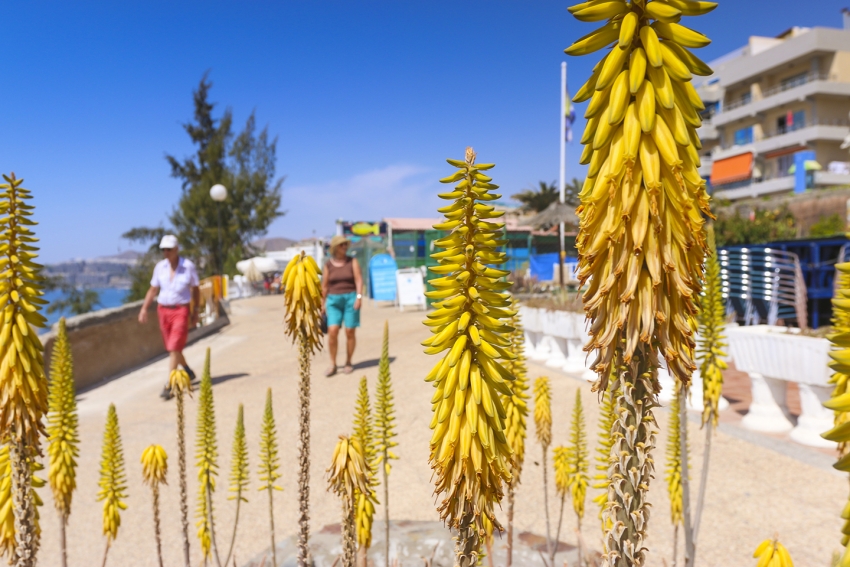The Bandama cinder cone and caldera are two different volcanos that erupted at the same time about 5000 years ago. While the cone volcano grew, the caldera volcano exploded when its magma came into contact with groundwater. Today we have the 570-metre high cinder cone, leaning slightly to the south due to the Trade Winds, and the 1000-metre diameter and 200-metre deep caldera (actually a maar).
The Bandama caldera is is a popular destination amongst day-trippers, cruise ship passengers and hikers and has plenty to keep you occupied for a few hours.
The visitor centre
Start at the visitor centre at the top of the cinder cone. It's in a neo-Canarian building built in the 1940s and while it's very pretty, has helpful staff and great views, its real treasure is underground.
The visitor centre wasn't actually built for the tourists but as an elaborate cover for a military observation point and hidden bunker. At the time, Spanish dictator Franco was convinced that the British were about to invade the Canary Islands so he set up a string of defensive bunkers around the cost. The Bandama viewpoint was to warn the bunkers of an invasion force.
The invasion never happened but Franco's bunker stayed a secret until recently. Now, it is open to the public on request (ask in the information centre); you get to see the bunker, and also watch a cool video about the origins of the caldera and the history of the area.
Walking
The start to the two Bandama walking tracks is amongst the group of houses where the caldera meets the cinder cone (right by the bus stop). You can either walk down to the crater rim or around the rim itself (this route has steep dropoffs and isn't suitable for people with vertigo). If you don't want to do a long walk, but still want to get a feel for the caldera from the inside, walk part way down to the first viewpoint on the track to the caldera floor.
As you walk down, look out for caves in the caldera walls where the island's original Canarii inhabitants used to live.
Once you at the bottom of the caldera, watch out for old Agustín; the caldera's official guardian still farms a small patch of land and doesn't appreciate people photographing him or trampling on his potatoes. Highlights here include ruined farmhouses, a stone threshing area and an old lagar or wine press (the caldera floor was once a vineyard).
Wine
The Bandama caldera is right in the middle of Gran Canaria's oldest and biggest wine area but most of the bodegas only open their doors if you book a visit in advance.
However, the Hoyos de Bandama bodega just by the gate to the caldera is open every day. It makes Caldera, one of Gran Canaria's best dry white wines and a series of other quality wines made from local Monte-grown grapes and grape must imported from Tenerife (consequently, its wines are DO Islas Canarias rather than DO Gran Canaria).
You can walk in and try several of the wines in the bodega, or book a complete wine-tasting and bodega tour by calling 928353893 or 630472753.
A glass of the Caldera dry white costs two euros and a bottle is 10 euros (compared to around 13 in the shops).














